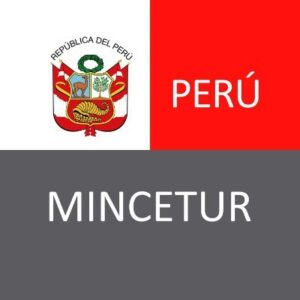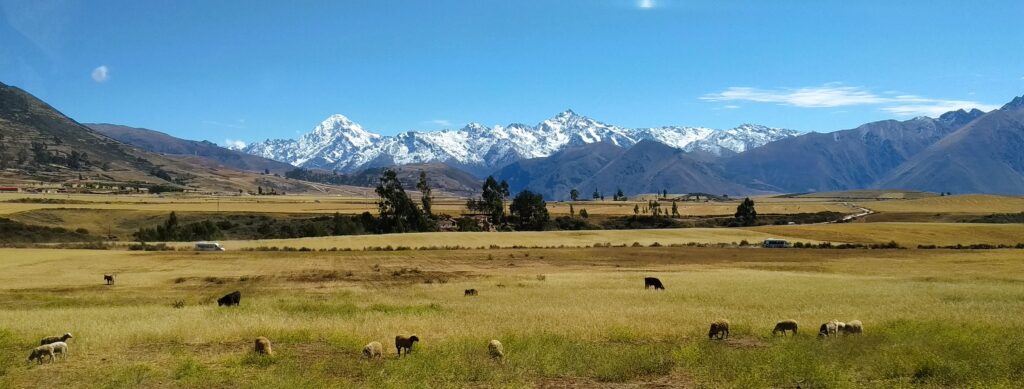
Baptized with the name of “The village of San Francisco de Maras”, this town was founded because of the migration of several inhabitants of the city of Cusco to this place, leaving behind the Inca palaces and taking possession of the area of Maras, since at the time of the colony was a much more important town than the province and district of Urubamba, with certain privileges because it had the “salt mines”, whose extraction since time immemorial made the commercial activity in the area grew and with it the economy of its inhabitants.
This populated center, in colonial times, was the obligatory passage of all traders, muleteers and mules that transported different tropical products such as coca leaves from the high jungle, as well as other inter-Andean products from the Sacred Valley and the Andes to be marketed.
“La Villa de San Francisco de Maras” is located approximately 40 km (24.85 miles) west of the city of Cusco and about 3,300 m.a.s.l. (10,820 ft). This town was founded in colonial times, during the conquest by the Spaniard Don Pedro Ortiz de Orué. The most important activity of its inhabitants is agriculture, whose main products are: corn, quinoa, beans, wheat, barley, oats, potatoes, among others. The second essential activity of the people of Maras is tourism. There are organized communities that offer rural tourism experiences, as well as handicrafts and textiles made by the people themselves. Among the most outstanding tourist attractions are:
- The Colonial church of San Francisco de Asis; whose mud bricks construction (a mixture of mud, Andean straw, water) is built on a stone masonry.
- The archaeological site of Moray; considered as the Inca agricultural laboratories, used to research and adapt seeds, especially corn.
- The salt mines of Maras and Pichingoto; salt mines, whose extraction is done by hand by the people of Maras and Pichingoto.
- The Cheqoq Archaeological Zone; these are pre-Inca constructions, which consist of granaries that were used to collect and store dehydrated products and supply the region with food during the dry season.
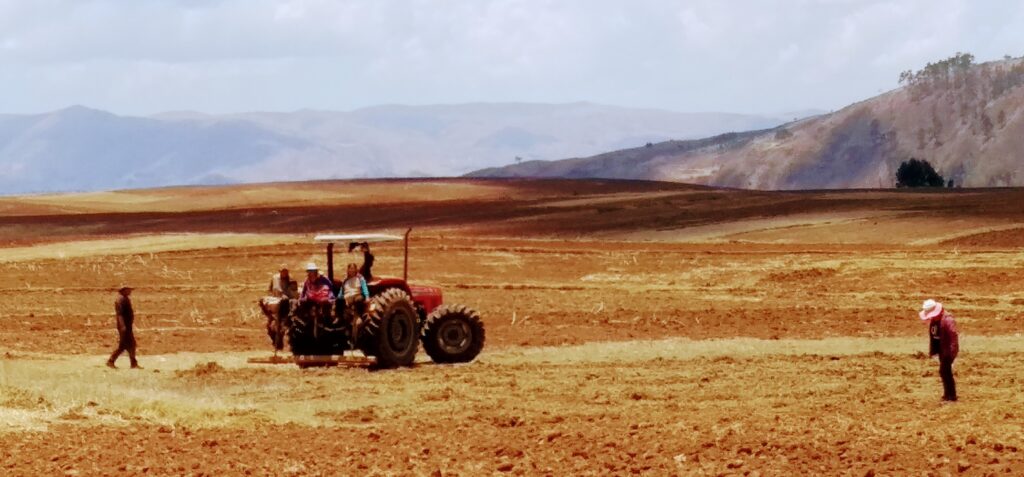
HISTORY
PRE-INCA, INCA AND COLONIAL TIMES:
“La Villa de San Francisco de Asis de Maras” has archaeological testimonies with evidence about the presence of the first inhabitants in this area; from groups of human settlements such as the Paqallamoqo (100 b.c.) (100 b.c. ) where ceramics of Wari and Qotakalli origin were found, to the settlement of the Ayarmacas who formed lordships and confederations and managed to dominate extensive territories such as Maras, Chinchero, Soqma, Ollantaytambo, Pumamarka, Patacancha; being Maras, the area of greater importance, since it was the town of greater confluence of traders, since salt was of great value to perform the barter or exchange of products.
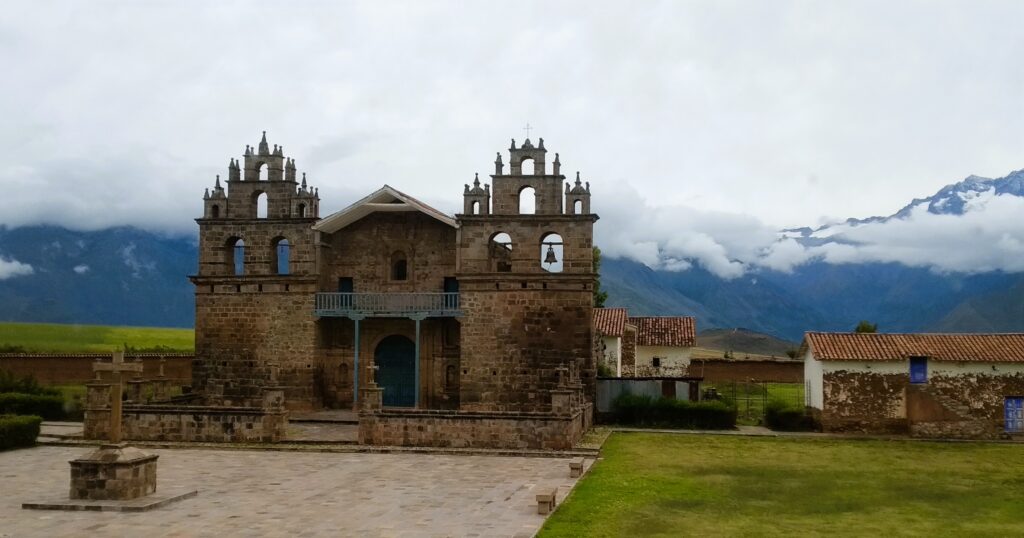
REPUBLICAN TIME:
In this time transcendental facts occur as the political creation of the district of Maras on January 02, 1867, during the mandate of President Don Ramon Castilla (who officially abolished slavery in the country). Another fact was the attack of the smallpox epidemic causing many deaths, a fact for which the authorities forced the inhabitants of Maras to build fences in their homes and paint them white to avoid contagion. Another fact was the creation of schools, the construction of the sanctuary of T’iobamba and the naming of all the streets in the town. Another important event in the social life of the people of Maras occurred on November 5, 1981, a massive protest and mass mobilization of the villagers, rejecting the abuses suffered by the salt company “EMSAL” towards the villagers and workers of the salt mines, where the villagers took the facilities of the salt mines giving the municipality of Maras the administration of this resource and thus improve the services and quality of life of the people of Maras.
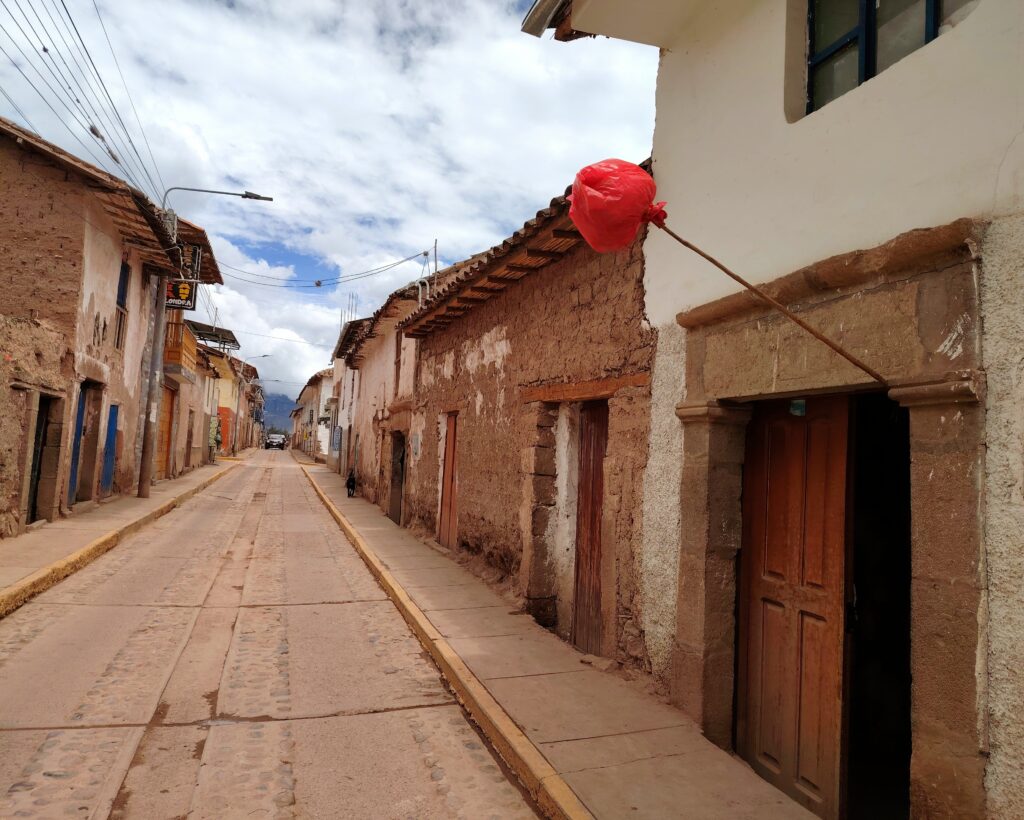
THE PORTADAS (DOORWAYS) OF THE VILLAGE OF SAN FRANCISCO DE MARAS
One of the characteristics of the houses of this town is the use of stone doorways, which begins in the house of the encomendero (the town’s authority in colonial times), this pattern continues in the 17th century with inscriptions and Christian symbols, which had as its objective the evangelization and extirpation of idolatries. From the XVIII century, the main caciques of the town, carved the lintels of their doors with the coat of arms granted by the Spaniards and elements that symbolize the monarchy of the church, these lintels have small decorative elements under the cornice. All these portals are urban elements of great historical-artistic value, but some stand out more than others for their historical importance, these doorways with great iconographic history are recognized by UNESCO as part of the historical legacy of the people of Maras, some of which are:
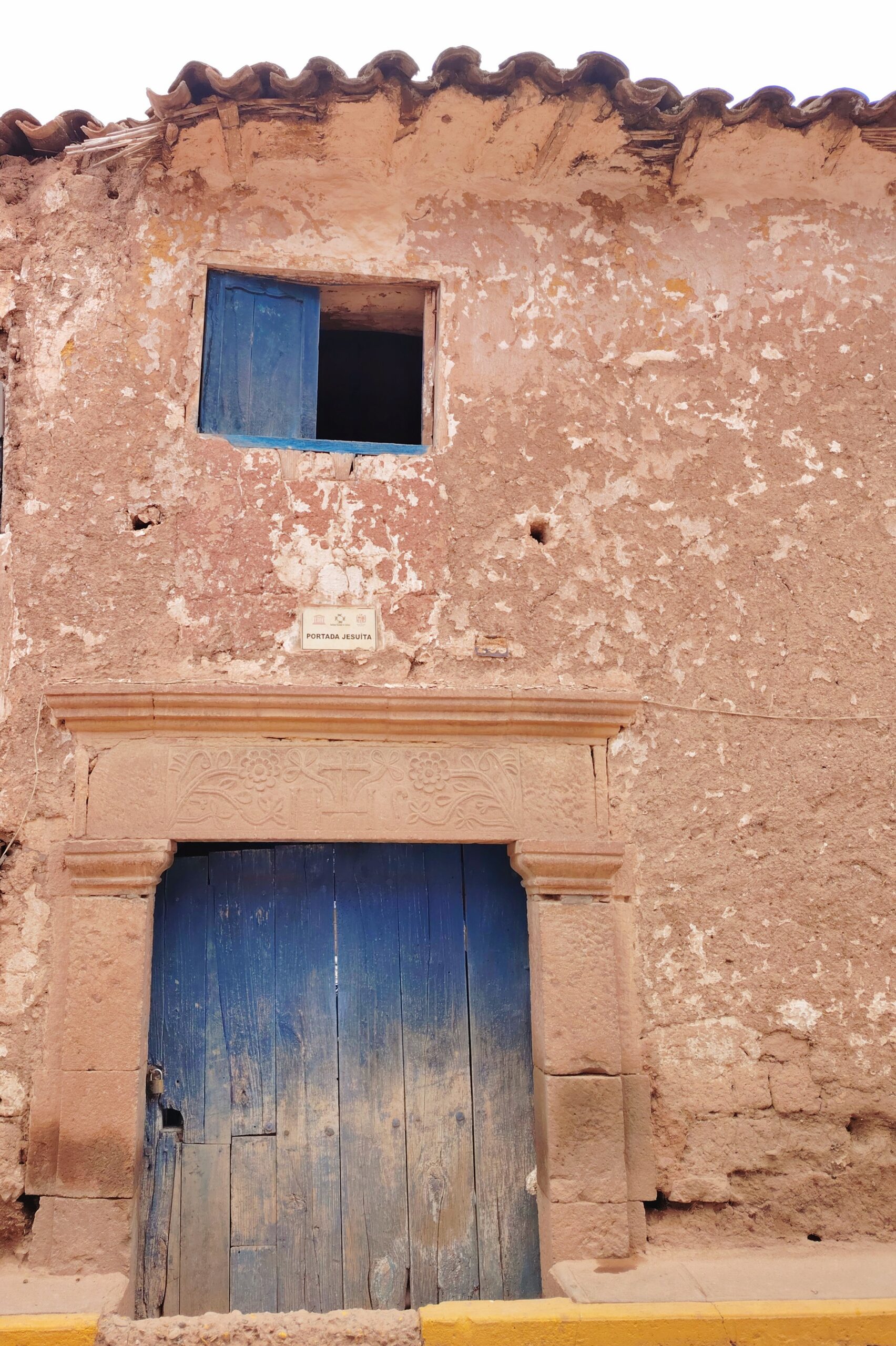
PORTADA JESUITE, so called because it has the Jesuit anagram JHS on its lintel, it does not indicate that it belonged to any member of this congregation. Its representation may be related to historical events of the past, the arrival of the Jesuits in Peru (1568) and the agricultural exploitation in Marasinas haciendas by the college of the Society of Jesus in Cusco in 1689.

PORTADA SANCHO USCA PAUCAR, this doorway is the one that has more ornamentation, with elements of flora and fauna, Hispanic and Christian classic elements; it is the doorway of greater attractiveness in the town of Maras including its balcony in the superior part of the lintel. Its execution corresponds to the XVIII century. In its iconography floral and fruit elements can be described; in the central sector a medallion that shows the paschal lamb with fire around it, symbol that represents Jesus Christ and in the superior part crowned by a cross; toward both sides of this Christian element, two lit candelabras are shown and two fruit bowls in the form of masks with clusters, pomegranates, flowers and fruit birds. At the ends of the lintel there are two crowned lions supporting the cornice and in the internal part of the lintel there is a cherubim.
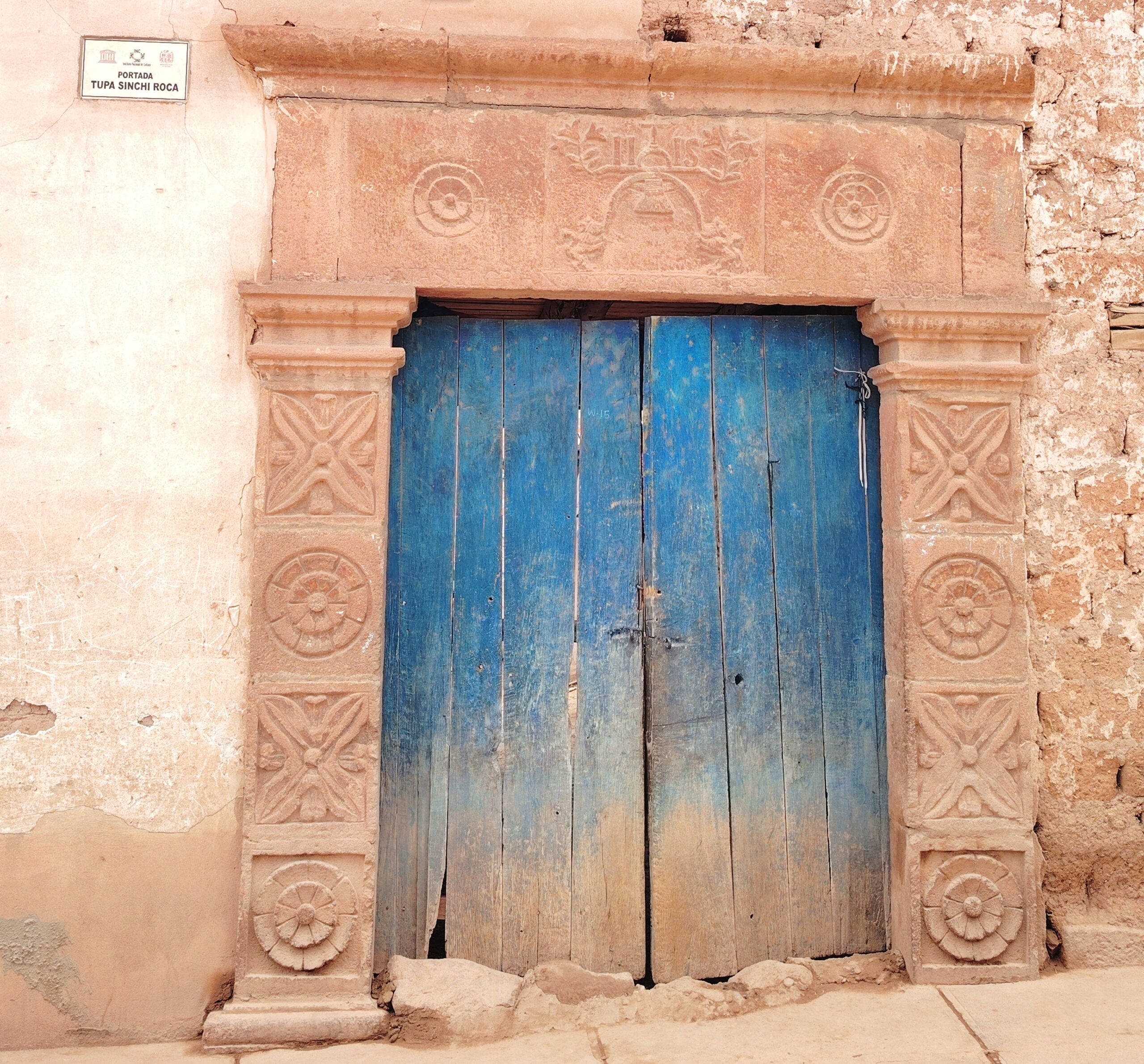
PORTADA TUPA SINCHI ROCA, this doorway is of great historical importance, since it belonged to the “Inca Tupac Sinchi Roca”, to whose lineage belongs the great Marasino painter “Antonio Sinchi Roca”, indigenous artist who made his greatest artistic production at the end of the XVII century and beginning of the XVIII century. The lintel represents an Inca coat of arms, in the central part shows a cross on the “Orbis Terrarum” decorated with representations of flowers placed symmetrically, also shows the anagram of Jesus with the letters engraved in disorder, in the lower part two lions with the royal crown, from where a rainbow is born and from the center hangs the “Imperial Tassel” or the Inca crown called “Mascaypacha”.
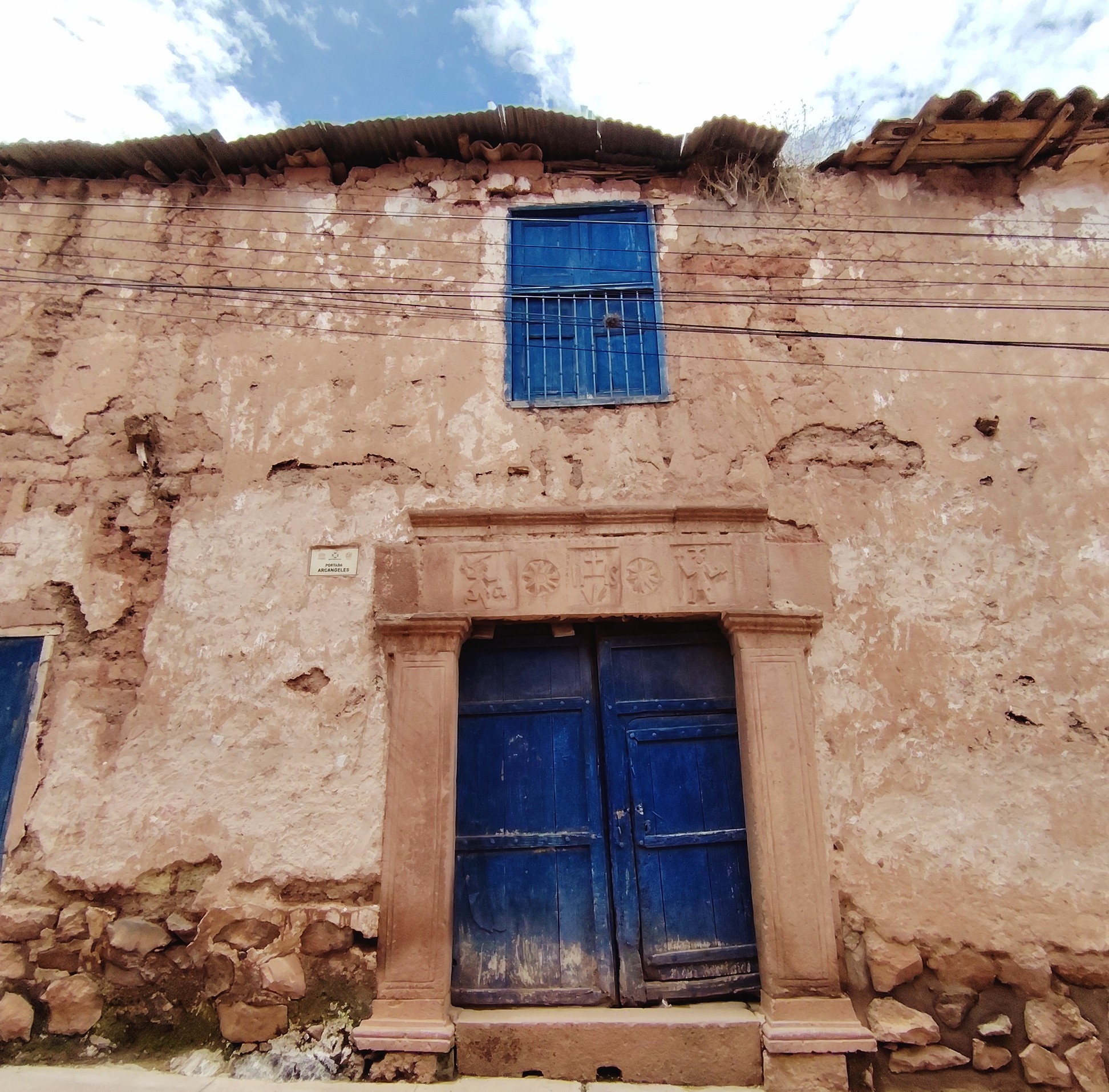
PORTADA ARCHANGELS, another beautiful cover that also shows in the central part the Christian anagram IHS, in the central part of the letter “H” a cross can be found; on both sides of this anagram, two floral details can be appreciated, each one with nine petals that go to the sides of the Christian anagram; to both outer sides, the archangels are appreciated, one of them holds a sword and in the other hand a scale (symbols of justice) and the other holds a sword with the tip down and in the other hand also a scale but that is already erased by the passage of time.
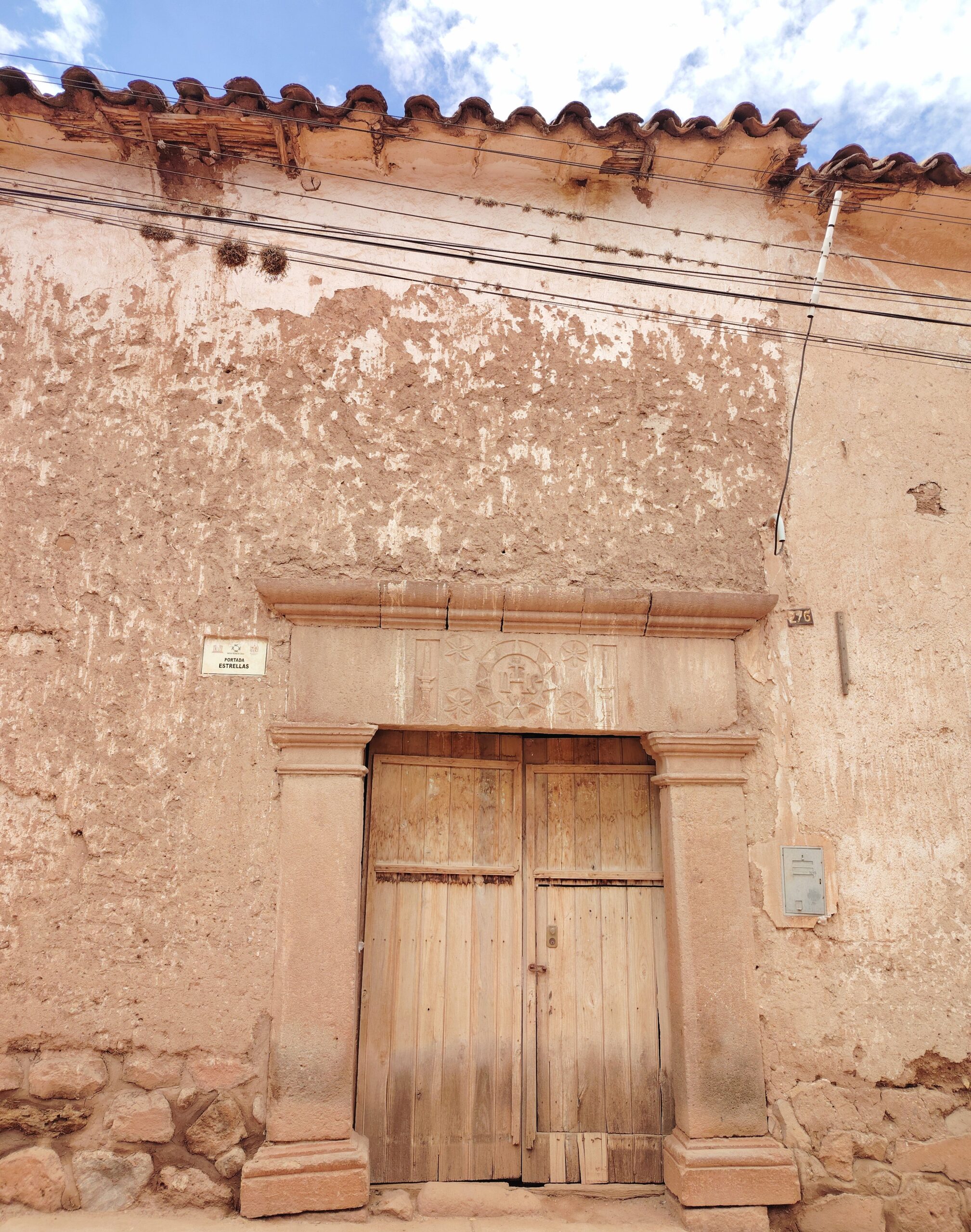
PORTADA STARS, It is one of the simplest doorway of the town of Maras, in its iconography can be observed in the central part the representation of the Sun with eleven edges of triangular form, inside the sun is represented the Christian anagram IHS that in the central part of the letter “H” a cross can be found; to both sides of this anagram, two floral details can be appreciated, making a total of four figures in flower, each one with six petals that go in the four corners of the anagram; finally towards the external sides of the iconography two lighted candelabra are shown, fervent symbol of the Christian faith.
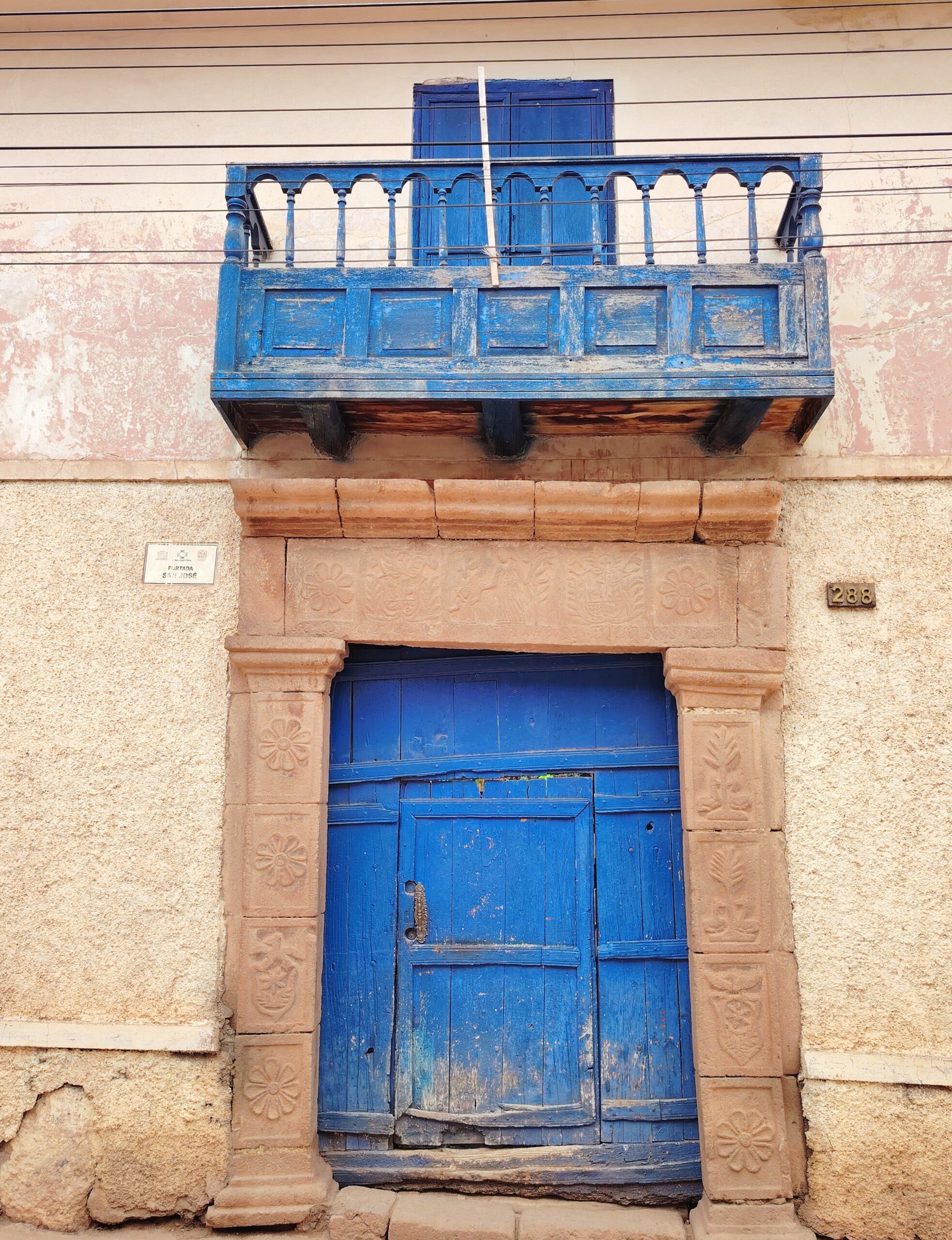
PORTADA ST. JOSEPH, built in the republican time, decorated in its jambs and lintels with floral motifs, American fauna, Christian elements and shields. In the central part it is represented San Jose that sustains a lily and it takes the boy Jesus in the hand. On both sides of the saint, the national coat of arms of Peru is represented, one of the coats of arms is properly represented with each of its symbols (quina tree, vicuña, cornucopia) and the other coat of arms with the symbols upside down (perhaps because the template was not placed correctly). In the jambs or columns that support the lintel, four quadrants with floral motifs are represented, one of them shows a bird in the middle; towards the other side, two quadrants that represent a palm tree and on both sides two seated llamas, in the other two quadrants floral motifs, of which one of them also shows a bird in the middle.
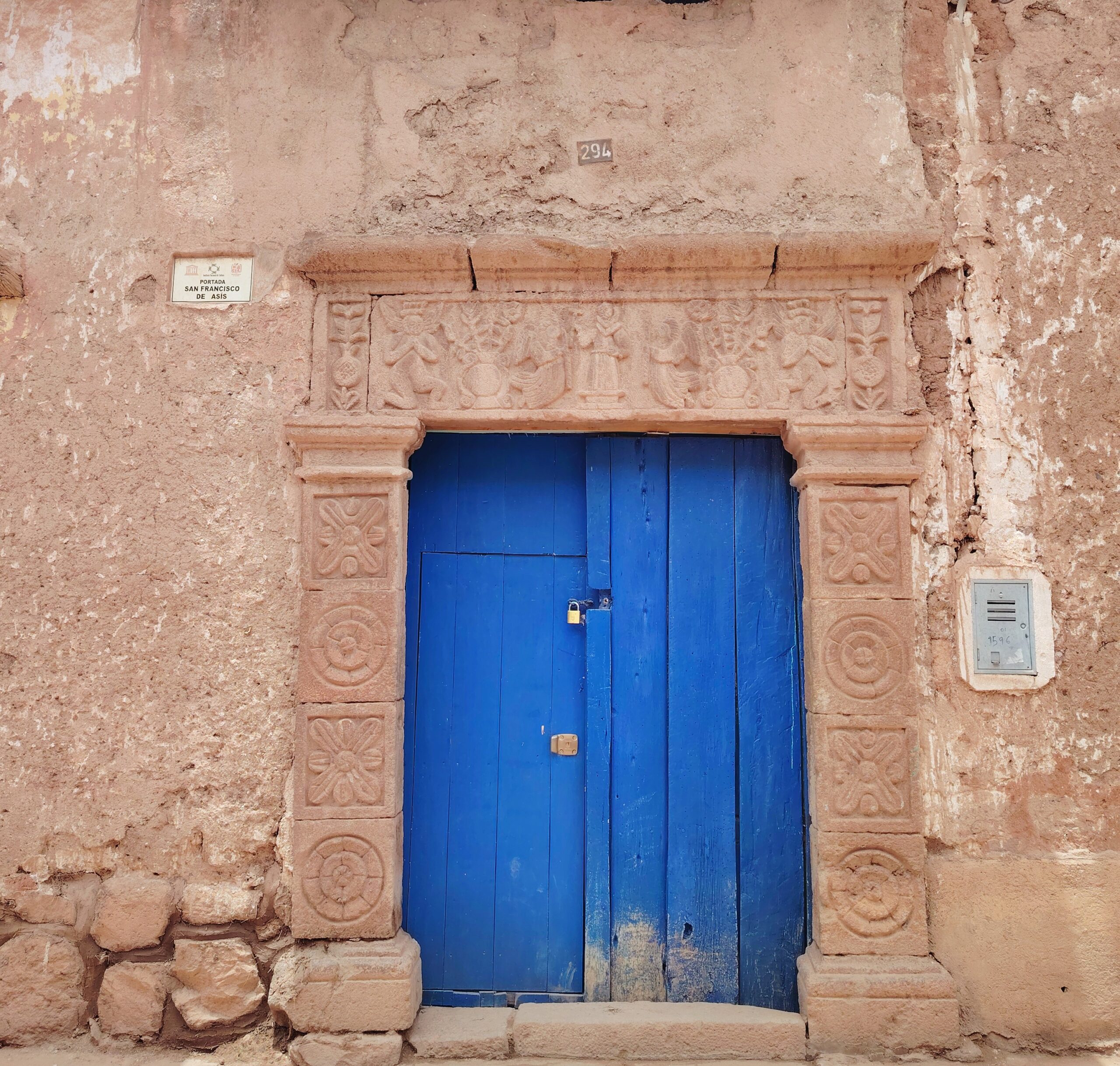
PORTADA ST. FRANCIS OF ASSISI, named like this, because in the central part of the iconography the saint is represented with his attributes: habit, hood, cross, the stigma in one of his hands and the skull in the other. The Andean angels are on both sides of the saint, each angel according to the celestial hierarchy, in first place and close to the saint are the Seraphim with a privileged position near the saint, holding a lit candle or candelabra. In second place and behind the Seraphim are the angels kneeling with their hands together and a crown of feathers, they symbolize power. These characters are also seen exchanging vases, Hispanic symbols with Andean fruits, one of them would be the pomegranate, symbol of fertility, floral elements and rosettes decorate the jambs or columns that support the lintel.
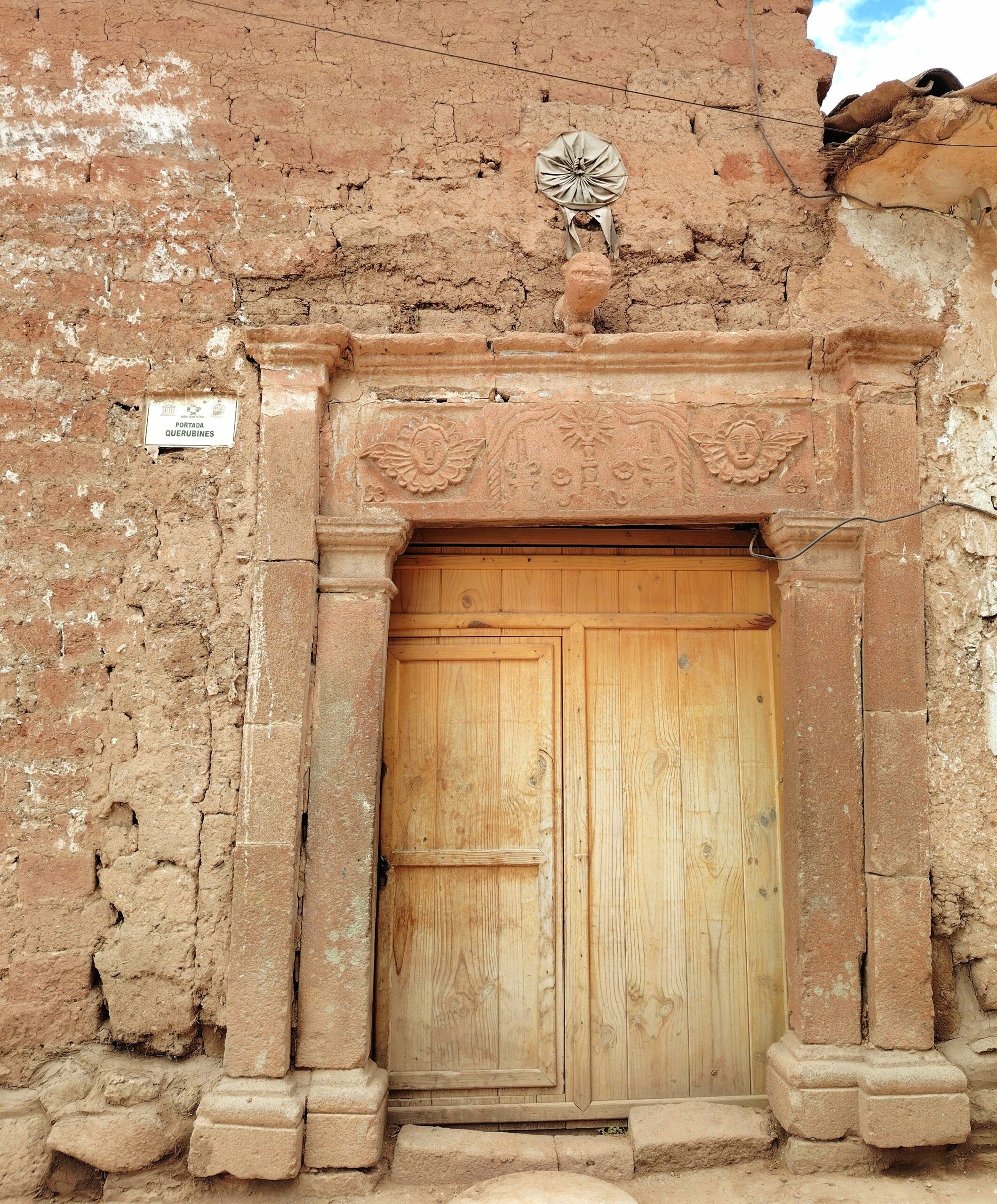
PORTADA QUERUBINES, this doorway shows in the central part of the lintel a kind of semi-circular altar that holds a cup covered with a host (possibly the representation of the holy grail or the chalice, on it is the representation of the sun with eleven points; To both sides of this anagram two cockades are shown, and to the outside two lighted candelabra, one to each side; all these elements surrounded by a kind of curtain as a curtain; finally to both sides faces of angels with feathered wings are shown, they represent the cherubim that accompany the central elements. In the external superior part of the lintel, it is possible to appreciate the head of a feline sculpted in stone that forms part of the lintel.
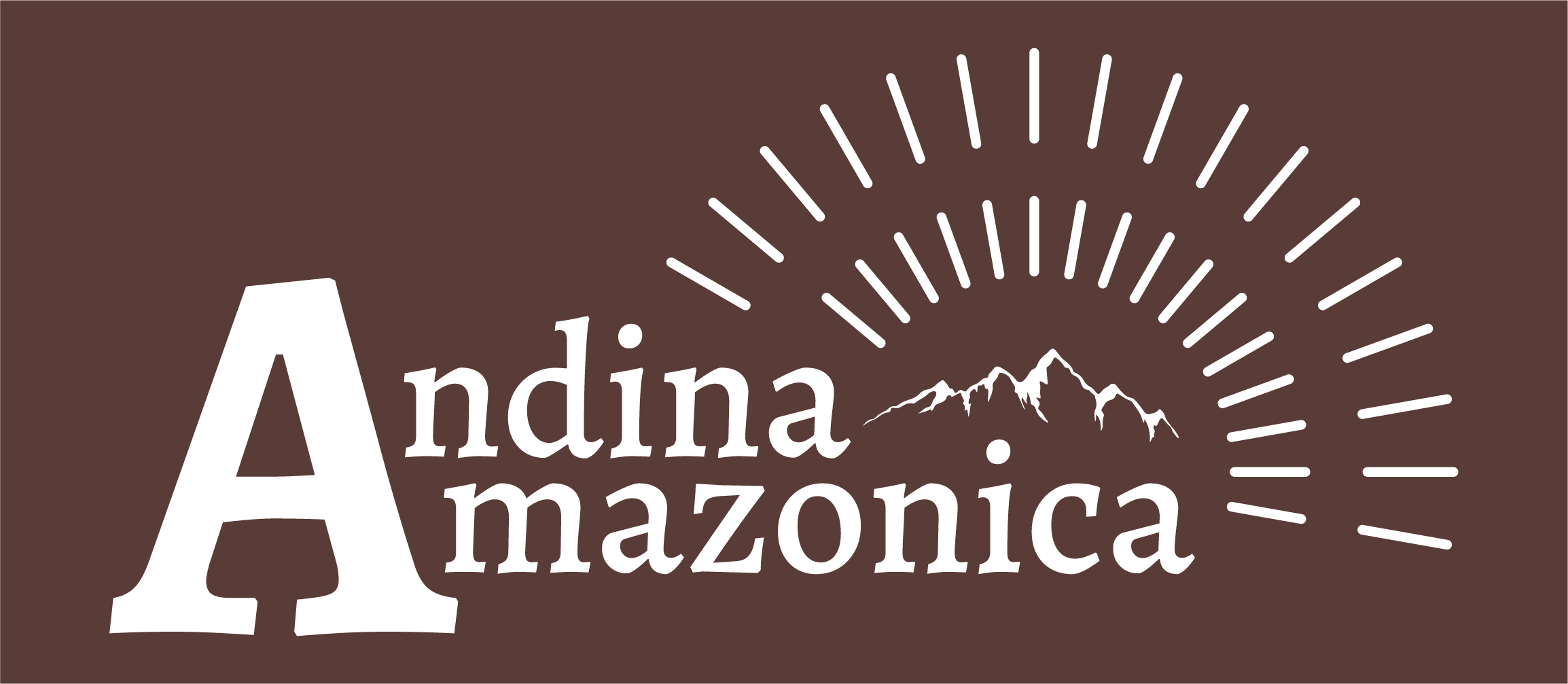
![.trashed-1735934148-IMG_20241126_113930[1] .trashed-1735934148-IMG_20241126_113930[1]](https://andinaamazonica.com/wp-content/uploads/elementor/thumbs/trashed-1735934148-IMG_20241126_1139301-scaled-qy1bxbcvbgoshabkn3pp6q36zyegr8ou2mnuwa3l2o.jpg)
